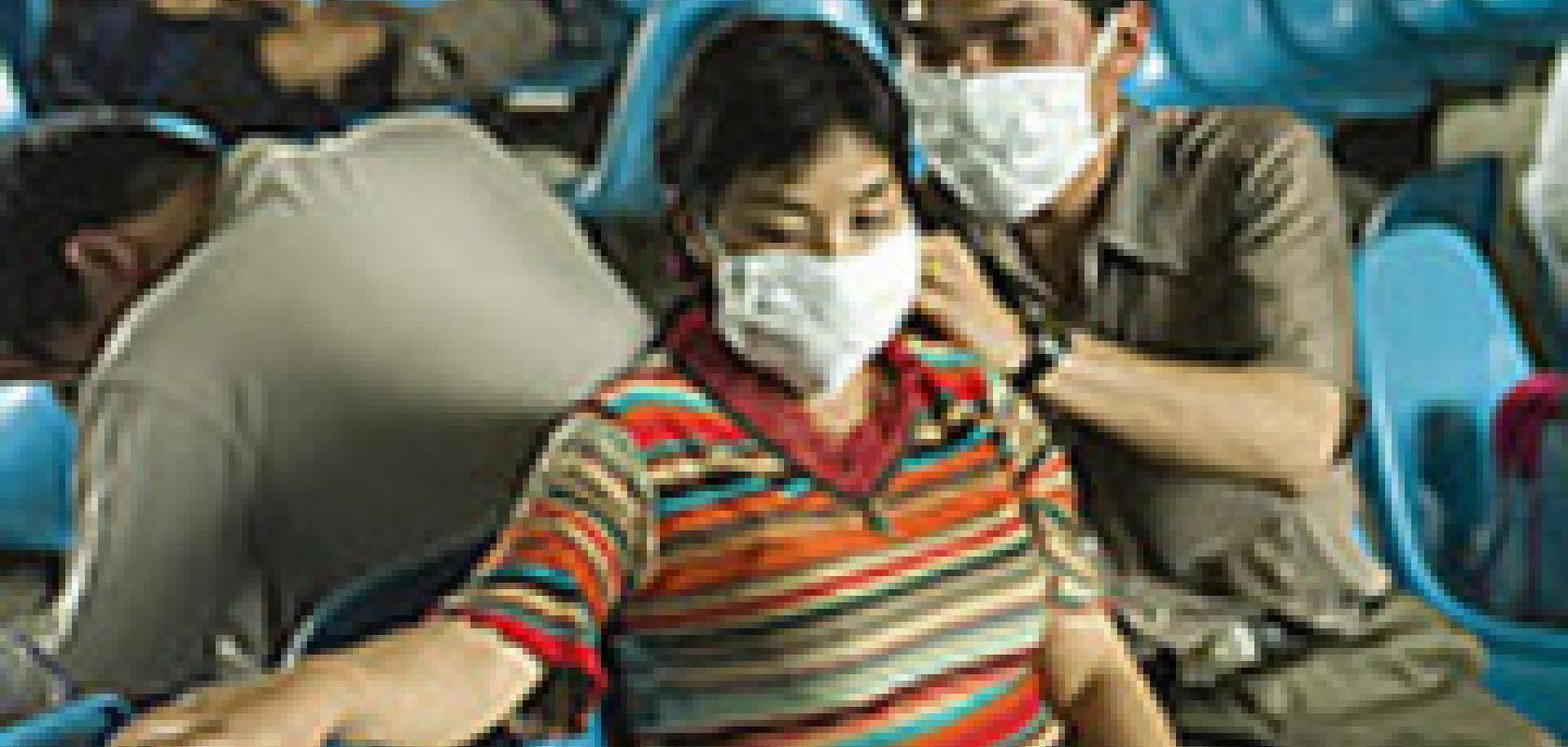If people change their behaviour in response to the presence of an infectious disease in their environment it will substantially reduce the number of people getting ill or even stop the outbreak altogether, according to a new report by researchers from the School of Biological Sciences and the Department of Computer Science at Royal Holloway, University of London.
We learn about the presence of a disease through contact with others. For instance, during the 2003 SARS outbreak, people in China sent hundreds of millions of text messages alerting friends and family about a 'fatal flu' in the province of Guangzhou, encouraging them to wear face masks or to stay home. At a more local level, notes on the nursery door can warn parents to the presence of a childhood disease, such as chickenpox. How exactly these behavioural changes affect the progression of the disease itself has, until now, rarely been studied.
The authors of the report, published in the Proceedings of the National Academy of Sciences of the USA, describe a mathematical model for the spread of awareness through word of mouth. As the information about the outbreak moves through the population, it loses its quality: individuals who have witnessed a disease first-hand are therefore more aware of the situation than those who receive information that has passed through many hands. This model is linked to an epidemic model in which more aware individuals reduce their susceptibility to the disease.
Computer simulations played an important part in the project. As Sebastian Funk, lead author and PhD student at Royal Holloway, explains, 'Computing was used to simulate an individual-based model; each member of the population was treated as a separate entity, and the individuals were linked to each other through two separate networks. One was the network over which disease propagated and the other was the network over which communications, or disease awareness, propagates. The networks do not necessarily have to overlap, as one can easily imagine a situation in which an infection is passed between two strangers.'
According to Funk, the simulations were carried out for three reasons: to visualise the processes, to verify mathematical results already obtained, and to further investigate properties that couldn't be tracked mathematically. The simulations used a Gillespie algorithm, a type of Monte Carlo simulation allowing an evolution over time. Simulations were implemented in C++, and a freely available Boost graph library was used in order to set up, and later to analyse the social networks of disease and information contacts. The simulations were run on a 4.3GHz Intel Xeon machine.
The study was part of a project called Amorph, looking at amorphous computing, which was funded by the Engineering and Physical Sciences Research Council (EPSRC). With regards to potential application of the findings, Funk states: 'The project remains a theoretical model, and it would obviously benefit from application to any kind of real process.'
The results of the study show that the spread of information about a local outbreak can indeed reduce the impact of a disease outbreak. Moreover, if individuals react swiftly to a disease that itself does not spread too rapidly, aware individuals can form a protective cordon around the outbreak and subsequently bring it to complete stop.
'This kind of locally-initiated, informal spread of awareness may play an important role in containing an epidemic, even when no official guidelines have been issued,' concludes Funk. 'We have to take into account the way people respond to a disease if we are to effectively understand and control outbreaks.'


